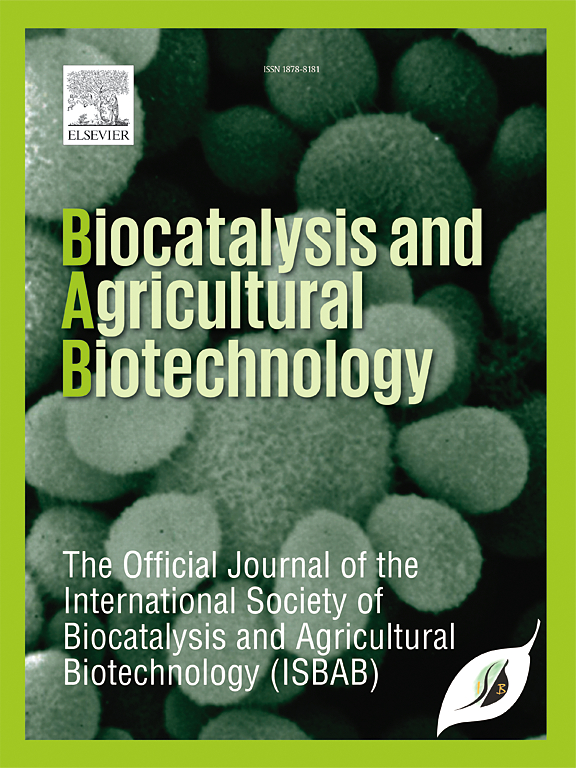A DNase from halophilic bacterium Bacillus pacificus targets two notorious biofilms of Pseudomonas aeruginosa PAO1 and Staphylococcus aureus
IF 3.4
Q2 BIOTECHNOLOGY & APPLIED MICROBIOLOGY
引用次数: 0
Abstract
Biofilm is a sessile microbial community in which microbes are encased in a self-produced matrix called extracellular matrix (EPS), composed of eDNA, proteins and carbohydrates. Microbes in biofilms are several times more resistant to antimicrobial agents and host defense systems, thus are responsible for 60–80 % of human bacterial infections. Therefore, the enzymes that target EPS components can play a vital role against these biofilms. In the present study, an enzyme was isolated from halophilic bacterium Bacillus pacificus strain ROC1 and its antibiofilm potential was checked against the biofilms of Pseudomonas aeruginosa and Staphylococcus aureus. DNase assay confirmed that the enzyme is DNase, which was further confirmed by whole genome sequence analysis that identified the potential DNase gene in ROC1. For the production of DNase Luria Bertani (LB) media was employed and harvested after 24 h of growth. The disruption and inhibition assays confirmed the antibiofilm potential of DNase by inhibiting 80% biofilm biomass of P. aeruginosa and 71% biofilm biomass of S. aureus. It also disrupts the preformed biofilms of both strains, while more disruption was observed in P. aeruginosa (71%) as compared to S. aureus (55 %). Characterization of DNase indicates its robust nature with profound ability to catalyze in wide range of temperature and salt, and the addition of cations effects the enzyme activity.
求助全文
约1分钟内获得全文
求助全文
来源期刊

Biocatalysis and agricultural biotechnology
Agricultural and Biological Sciences-Agronomy and Crop Science
CiteScore
7.70
自引率
2.50%
发文量
308
审稿时长
48 days
期刊介绍:
Biocatalysis and Agricultural Biotechnology is the official journal of the International Society of Biocatalysis and Agricultural Biotechnology (ISBAB). The journal publishes high quality articles especially in the science and technology of biocatalysis, bioprocesses, agricultural biotechnology, biomedical biotechnology, and, if appropriate, from other related areas of biotechnology. The journal will publish peer-reviewed basic and applied research papers, authoritative reviews, and feature articles. The scope of the journal encompasses the research, industrial, and commercial aspects of biotechnology, including the areas of: biocatalysis; bioprocesses; food and agriculture; genetic engineering; molecular biology; healthcare and pharmaceuticals; biofuels; genomics; nanotechnology; environment and biodiversity; and bioremediation.
 求助内容:
求助内容: 应助结果提醒方式:
应助结果提醒方式:


